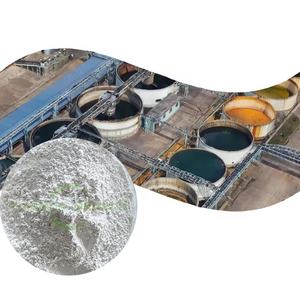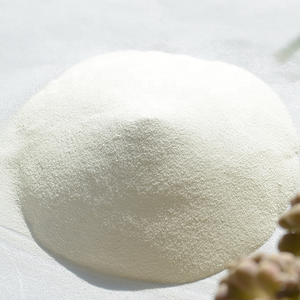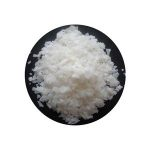1. Introduction
In the past 48 hours, a new study published in the Journal of Cosmetic Science has reignited debate around sodium lauryl sulfate (SLS) and its role in skin irritation, especially in sensitive populations. The research compares SLS with newer, milder surfactants like decyl glucoside and sodium lauroyl methyl isethionate, highlighting a clear industry shift toward gentler cleansing agents. This development underscores the need for a thorough understanding of SLS and how it stacks up against modern alternatives.

Sodium lauryl sulfate—also known as sodium dodecyl sulfate (SDS), natrium lauryl sulfate, or simply SLS—is one of the most widely recognized anionic surfactants. Found in everything from shampoos to industrial cleaners, its effectiveness as a foaming and cleansing agent is undeniable. But as consumer demand for safer, more sustainable ingredients grows, formulators are increasingly turning to alternatives. Let’s break down what makes SLS tick—and why it might not always be the best choice.
2. What Is a Surfactant, Anyway?
The meaning of surfactant is simple: it’s a compound that lowers surface tension between two substances—like oil and water—allowing them to mix more easily. Surfactants have a hydrophilic (water-loving) head and a hydrophobic (oil-loving) tail. This dual nature enables them to emulsify, foam, wet surfaces, and disperse dirt.
Surfactants fall into four main categories: anionic, cationic, non-ionic, and amphoteric. Sodium lauryl sulfate is a classic example of an anionic surfactant, carrying a negative charge. In contrast, cetyl trimethyl ammonium bromide (CTAB) is a cationic surfactant with a positive charge, often used in conditioners for its antistatic properties. Non-ionic surfactants like polysorbate 80 or Pluronic 127 (poloxamer 188) carry no charge and are prized for stability in formulations. Amphoteric surfactants—such as cocamidopropyl betaine (also called coco betaine or amidopropyl betaine)—can switch charges depending on pH, making them exceptionally mild.
3. Sodium Lauryl Sulfate vs. Sodium Laureth Sulfate
Many confuse SLS with sodium laureth sulfate (SLES), also labeled as sodium lauryl ether sulfate or sodium lauryl ether sulphate. While both are anionic surfactants derived from lauryl alcohol, they differ significantly in structure and irritation potential.
SLS is made by sulfating dodecyl alcohol (a 12-carbon chain), resulting in a small, highly reactive molecule that penetrates skin easily—often causing dryness or irritation. SLES, on the other hand, undergoes ethoxylation (adding ethylene oxide units), creating a larger, less penetrating molecule. This makes SLES much milder, which is why it’s commonly used in ‘SLS-free’ shampoos—even though it’s still a sulfate.

Note: Labels like ‘sls sodium laureth sulfate’ or ‘sulfate laureth’ are often misleading marketing terms. True SLS-free products avoid both SLS and SLES, opting instead for non-sulfate surfactants.
4. The Rise of Mild and Bio-Based Alternatives
Driven by clean beauty trends and environmental concerns, the industry is embracing gentler, biodegradable surfactants. Alkyl polyglucosides—like decyl glucoside and coco glucoside—are non-ionic, derived from coconut and glucose, and extremely mild. They’re often paired with amphoteric surfactants like cocamidopropyl betaine to boost foam without irritation.
Other notable alternatives include:
- Sodium cocoyl isethionate: A creamy, coconut-derived anionic surfactant used in syndet bars.
- Sodium lauroyl sarcosinate (or lauroyl sarcosinate): A mild foaming agent found in toothpaste and facial cleansers.
- Sodium coco sulfate: A less refined but still sulfate-based option sometimes marketed as ‘natural.’
Bio surfactants like rhamnolipids or sophorolipids are also gaining traction, though cost remains a barrier. Companies like Rohit Surfactants Private Limited are investing in scalable production of these eco-friendly options.

5. SLS in Non-Cosmetic Applications
Beyond personal care, SLS and related surfactants play key roles in agriculture and industrial settings. For instance, surfactant for herbicides—often a blend of nonionic surfactant and wetting agents like lignin sulfonate—helps active ingredients adhere to waxy plant leaves. Lawn wetting agents or wetting agent for grass frequently use ethoxylated alcohols or Span80 (sorbitan monooleate) to improve water penetration.
In labs, sodium dodecylbenzene sulfonate serves as a cheaper anionic surfactant for detergents, while sodium deoxycholate and sodium oleate appear in biochemical protocols. Even copper 1 bromide reactions sometimes involve CTAB as a phase-transfer catalyst—though it won’t dissolve in hexane due to its ionic nature.
6. Safety, Misconceptions, and Market Trends
Despite viral claims, SLS is not carcinogenic. However, it can disrupt the skin barrier, especially at high concentrations or with prolonged exposure. This has led to a surge in ‘SLS-free’ labeling—even though many replacements (like ammonium lauryl sulfate or sodium cocoyl glutamate) serve similar functions with better tolerability.
Consumers searching for ‘sodium lauryl sulfate for sale’ should note that industrial-grade SLS differs from cosmetic-grade in purity. Also, terms like ‘coco sodium sulfate’ or ‘na lauryl sulfate’ are often used interchangeably with SLS but may imply plant-derived sourcing.
Interestingly, fluoro surfactants and sarcosinate-based cleansers are now being explored for high-performance, low-irritation applications in medical and aerospace fields.
7. Conclusion
Sodium lauryl sulfate remains a powerful, cost-effective surfactant—but it’s no longer the default choice for modern formulations. With a robust lineup of alternatives—from ethoxylated alcohols to amphoteric betaines and bio surfactants—formulators can achieve performance without compromising on safety or sustainability. Whether you’re developing a shampoo, a weed killer, or a lab reagent, understanding the nuances between anionic, cationic, non-ionic, and amphoteric surfactants is key to making informed decisions.
Our Website founded on October 17, 2012, is a high-tech enterprise committed to the research and development, production, processing, sales and technical services of ceramic relative materials such as Sodium. Our products includes but not limited to Boron Carbide Ceramic Products, Boron Nitride Ceramic Products, Silicon Carbide Ceramic Products, Silicon Nitride Ceramic Products, Zirconium Dioxide Ceramic Products, etc. If you are interested, please feel free to contact us.


